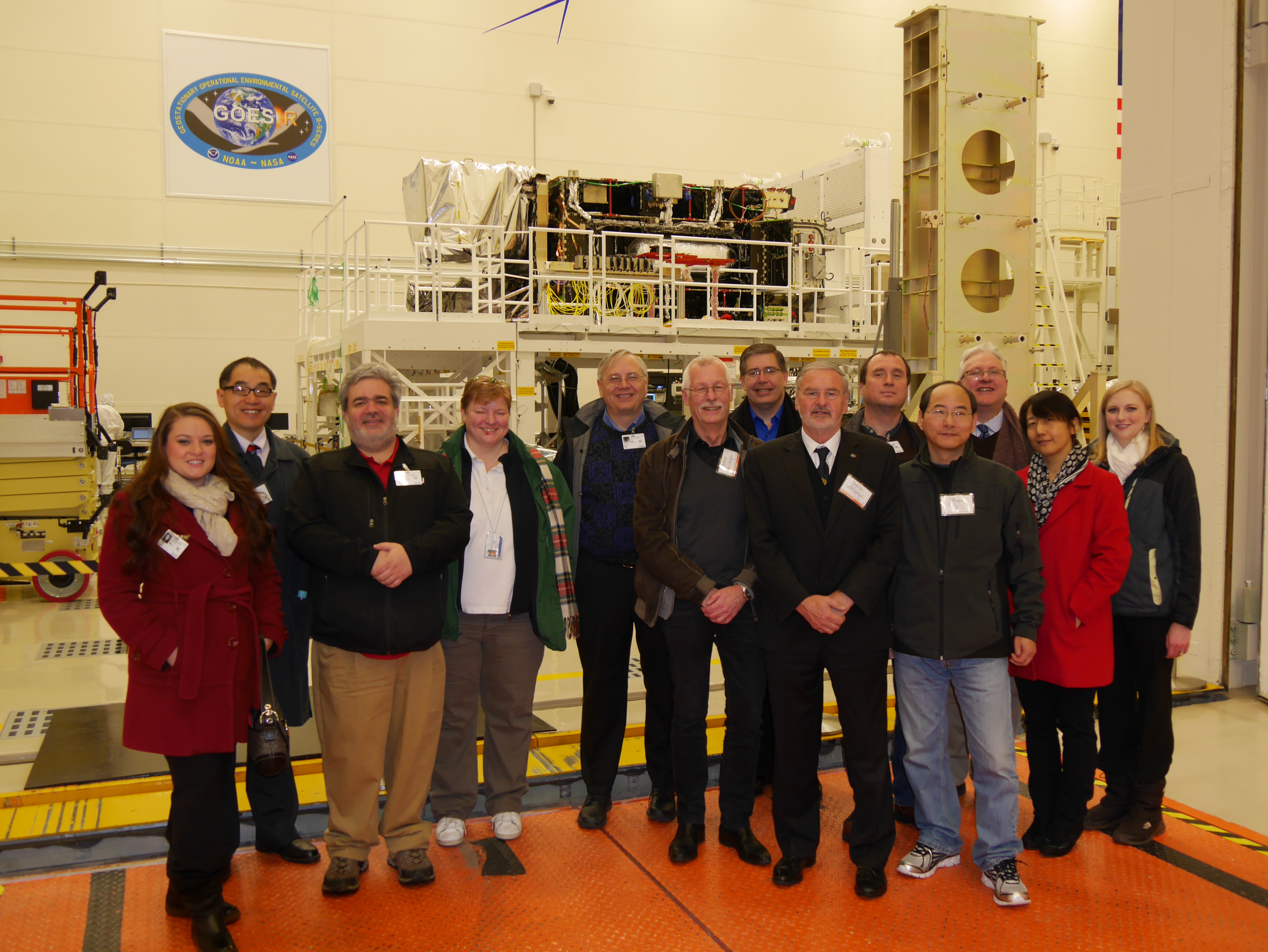
Janel (left) with some of the team at Lockheed Martin last year, just outside of the clean room where the satellite was being built in Colorado (GOES-R in the background being built).
Hello, Science Cheerleader fans! Last month, NASA and the National Oceanographic and Atmospheric Administration (NOAA) launched the GOES-R satellite, the latest generation of high-capability U.S. weather satellites. Science Cheerleader Janel has been working with the GOES-R team and recently found time in her busy schedule to talk about the launch and the satellite’s mission.
Thank you! It feels so great to be a part of a successful launch of the next generation of weather satellites! I have been involved with GOES-R for about 4 years. I took a position as the User Readiness Coordinator right out of graduate school and am now working with the Product Readiness Operations Team as the Training and User Liaison.
My role has evolved since then, into my new position as the Training and User Liaison for the Product Readiness and Operations Team but still involves some of the same duties. The User Readiness Coordinator worked with the GOES-R Program office to prepare users for the new capabilities of the GOES-R Series weather satellites. This included a vast array of user outreach activities, planning and facilitating conferences, technical meetings, and work sessions. It also included coordination of the science program’s proving ground activities such as demonstration proposals, operations plans, schedules, and final reports.
What makes GOES-R different from previous weather satellites?
The GOES-R series brings a whole new level of observational capabilities that will significantly improve short-term weather forecasts and severe storm watches and warnings, maritime forecasts, seasonal predictions, drought outlooks, and space weather predictions, all of which directly affects public safety and protection of property. The satellite will provide advanced imaging with increased spatial resolution and faster coverage for more accurate forecasts, real-time mapping of lightning activity, and improved monitoring of solar activity. GOES-R (now GOES-16 as it has reached it’s current orbit location of 89.5W degrees) will be able to provide images of severe storms as frequently as every 30 seconds! It will improve hurricane tracking and intensity forecasts, increase thunderstorm and tornado warning lead time, improve aviation flight route planning, and improve solar flare warnings for communications and navigation disruptions. With all the new features, if you were to compare the GOES-R Series to the current operating GOES constellation of satellites, it would be like comparing a black and white TV, to a brand new HD TV!
Did you have a mission role during the launch, or were you just a nervous spectator?
I was able to attend launch as a very nervous spectator. Those who worked for the satellite and their families were given a V.I.P viewing area at Kennedy Space Center. The launch window was only one hour and liftoff ended up being delayed due to an anomaly detected during the countdown. After many deep breaths by the entire program, GOES-R (now GOES-16) successfully launched at the very last minute of the approved window! It was an incredible sight to watch something so important to the weather community begin its journey into space, and know that I was able to contribute.
What comes next?
As the Training and User Liaison, my role is still focused on the users, but more directly than before. A new satellite with extensive capabilities requires a lot of training and preparation for all who will be using the data. Specifically I am working to build a training database with resources for the various users of the satellite data. My focus is on the international, research, and broadcast communities. Each community has a slightly different level of interest and background so I work with each requester to tailor the training for their specific needs/uses.
You can check out the mission page here: www.goes-r.gov
There are lots of videos for both adults and kids:
What is GOES-R? https://www.youtube.com/watch?
For kids (I absolutely LOVE these adorable videos): http://scijinks.jpl.n
Launch photos & videos: http://www.goes-r.gov/
Also fun games and apps: http://www.goes-r.gov/ed
Learn more about Science Cheerleader Janel: https://sciencecheerleaders.org/2012/10/janel-college-cheerleader-and-rider-of-storms/

